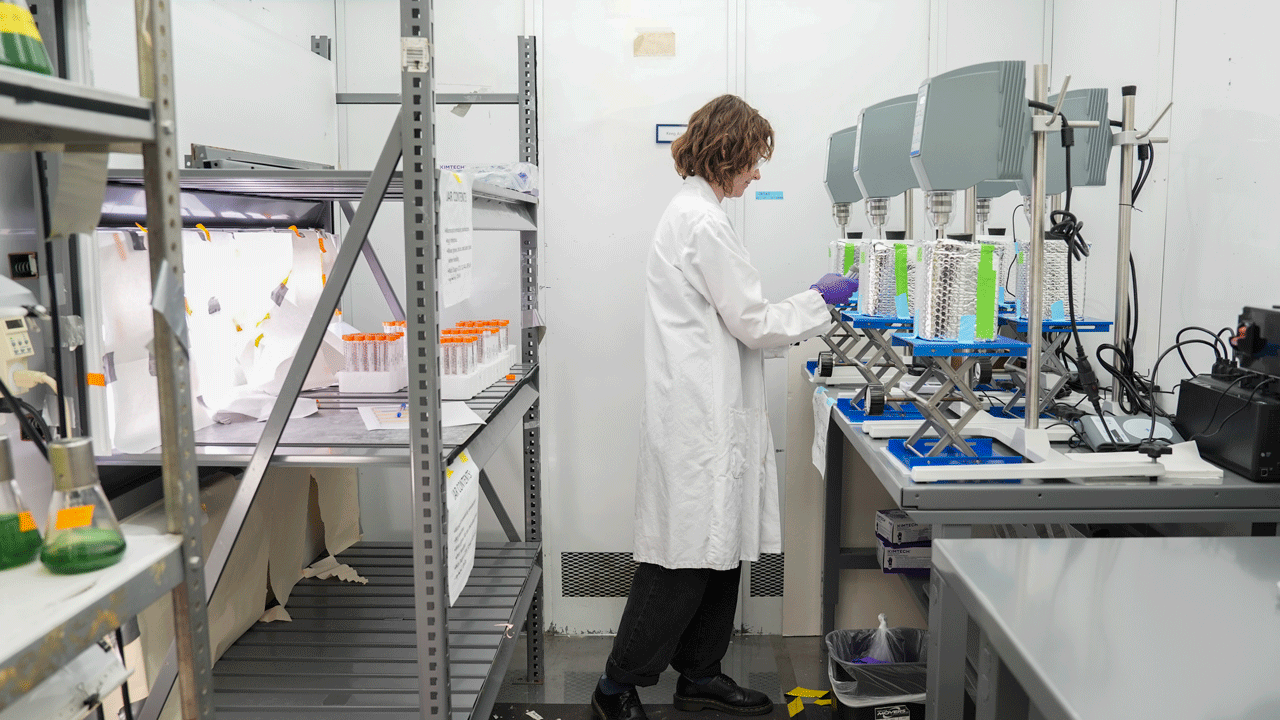Robert F. Kennedy Jr. is polling stronger than any third-party candidate has in decades, pulling in roughly 10 percent of registered voters across the battleground states as he saps support from both President Biden and former President Donald J. Trump, a new series of polls has found.
The overall results in the Biden versus Trump contest were virtually unchanged when Mr. Kennedy was included in the polls conducted by The New York Times, Siena College and The Philadelphia Inquirer. But beneath the surface of that seeming stability, the surveys revealed how Mr. Kennedy, powered by social media and younger voters, has emerged as an unpredictable X factor in what would otherwise be a 2020 rematch.
With less than six months until the election, the faction of the electorate giving Mr. Kennedy early support exposes some of the vulnerabilities inside the president’s Democratic coalition. Mr. Biden dropped all the way to 33 percent in a five-candidate race, an alarmingly low share of the vote for an incumbent president. The series of polls focused on what are expected to be the most contested states this fall: Arizona, Georgia, Michigan, Nevada, Pennsylvania and Wisconsin.
Two of the groups that Mr. Kennedy performed strongest with in the surveys — voters under 30 (18 percent support) and Latinos (14 percent) — have traditionally been strong Democratic constituencies, unnerving some party strategists. Mr. Biden is also winning only half of Black voters in the multicandidate race.
Mr. Kennedy is clearly getting a boost from the rise of social media and the ability to communicate his message directly to voters. Among the roughly one in six voters who said they consumed most of their news from social media, Mr. Kennedy was getting 16 percent of the vote, nearly equal to Mr. Biden’s 18 percent.
Among crucial independent voters, Mr. Kennedy was pulling in 16 percent support. But his supporters say they are far less committed to him than backers of Mr. Biden or Mr. Trump, and less likely to vote at all.
“I would support him as kind of like a protest vote,” said Benjamin Sandoval, 21, a student at the University of Michigan who is originally from Ecuador and who described Mr. Biden as “weak” and Mr. Trump as a “bad man.”
Half of Mr. Kennedy’s supporters said they were voting chiefly for him, and nearly half said their support was mostly a vote against the other candidates.
Overall, Mr. Trump is leading by six percentage points in a one-on-one race with Mr. Biden. Mr. Trump was ahead by seven points when Mr. Kennedy and three other third-party candidates were included. None of those three other candidates topped 1 percent.
Polling third-party candidates has notoriously been tricky, and historically, their support has decreased as elections near and the reality of playing spoiler grows. In fact, Mr. Kennedy’s support is already less than half of what it was in the previous battleground poll last fall, though that is most likely due, at least in part, to a change in the order of the questions asked.
A clear generational divide emerged in the surveys: Mr. Kennedy had more than twice as much support (15 percent) among voters under 45 as those over 45 (7 percent). Mr. Kennedy, 70, is younger than Mr. Trump, 77, and Mr. Biden, 81, but if elected he would still be one of the oldest presidents in U.S. history.
Mr. Kennedy entered the 2024 race as a Democrat running against Mr. Biden, and he received favorable coverage in conservative news outlets. The tenor has shifted now that he threatens Mr. Trump as well.
He appears to be siphoning support from some natural Trump constituencies, too. He garnered 13 percent support among the voters who said the country’s political and economic systems need to be torn down entirely.
With his famous Democratic last name, Mr. Kennedy is emerging as a force of unpredictability in an election that strategists in both parties expect to be extremely close. He is both a possible outlet for voters frustrated with Mr. Biden but unready to make the leap to Mr. Trump and an option for those unhappy with Mr. Trump but unwilling to cast a ballot for Mr. Biden.
Chantel Turk, a dance studio owner in Marietta, Ga., said she did not have faith in Mr. Trump or Mr. Biden, so “by default” she was backing Mr. Kennedy. An independent voter, Ms. Turk said she might not vote at all if Mr. Kennedy did not make the ballot in Georgia, frustrated by the lack of progress toward “equality for Black people or women in this country.”
“I’m just not seeing much change,” said Ms. Turk, 33. “I haven’t seen change since I started voting, so I’m losing faith in the system.”
The poll was not one survey but six different ones across Arizona, Georgia, Michigan, Nevada, Pennsylvania and Wisconsin. Mr. Biden won all six states in 2020 but was now trailing everywhere but Wisconsin among registered voters.
Mr. Kennedy’s support was remarkably consistent. He never scored below 9 percent or above 12 percent in any of the six states, with his backers spread evenly across cities, suburbs and rural areas, and among high-income and lower-wage workers.
Mr. Kennedy’s effect on the Biden-Trump contest, however, did differ by state.
In Michigan, Mr. Kennedy’s inclusion helped Mr. Biden narrow his gap with Mr. Trump among registered voters, by five percentage points. But in Wisconsin, Nevada and Arizona, Mr. Trump’s lead expanded by two percentage points when Mr. Kennedy was included.
When the survey considered only likely voters, Mr. Biden was narrowly leading in Michigan — but losing in Wisconsin.
It was not clear precisely what was causing the differences between the states.
What was clear was that six months out from the election, Mr. Kennedy’s support appears far more fragile than that of the two major candidates. Roughly 90 percent of supporters of the current or former president said they were very likely or almost certain to vote. But only two-thirds of Mr. Kennedy’s supporters said the same. And only 29 percent of Kennedy supporters said they were “definitely” backing him this fall — compared with roughly 80 percent who said that among Mr. Biden and Mr. Trump’s backers.
That leaves plenty of room for both Democrats and Republicans to define Mr. Kennedy, and to try to win back their traditional supporters.
Those efforts have already begun. Mr. Trump and his allies are pushing to define Mr. Kennedy as a liberal (“R.F.K. and Biden are competing for who is further left,” Donald Trump Jr. said on his streaming program last week). Democrats cast him as a MAGA-backed right-wing plant. The Democratic National Committee has established an entire team to undercut Mr. Kennedy’s support.
Mr. Biden’s support in the multicandidate field — 33 percent — is identical to his support in Times/Siena polling of battleground states in November. Mr. Trump’s support has risen to 40 percent from 35 percent.
For Mr. Kennedy, the next big hurdle is actually getting on the ballot. Of the six battleground states surveyed, he has so far qualified only for Michigan’s ballot.
Mr. Kennedy is not as widely known as Mr. Trump or Mr. Biden. But he is better liked. Of the three, Mr. Kennedy was the only candidate whom more voters felt favorably toward than not — 41 percent were favorable, compared with 38 percent who were unfavorable.
“I just am so sick of Republicans versus Democrats,” said Adam Bogues, 33, who is the general manager of a cannabis dispensary near Grand Rapids, Mich. “I’m just trying to break away from the same things that we’ve been getting for the past, you know, at least since I’ve been around, the last 33 years.”
Mr. Kennedy was viewed most positively by the youngest voters, with roughly twice as many people under 30 rating him favorably than not.
Of all the swing states, Mr. Biden performed the weakest, and Mr. Kennedy the strongest, in Nevada, which is disproportionately diverse and young. The president’s 27 percent support — in a state he won in 2020 — was roughly halfway between Mr. Trump’s 41 percent and Mr. Kennedy’s 12 percent.
“This is going to be basically my first election that I’m going to be able to vote, and I think it’s going to be very important because, you know, my vote might make a difference,” said Fabiola Ruiz Gomez, 44, a Democrat who lives in Las Vegas and became a U.S. citizen a few years ago.
Ms. Ruiz Gomez is leaning toward Mr. Kennedy. She has never been to one of his events but has started tracking him on social media, watching his videos and weighing his positions. “He’s addressing the situation with the housing crisis,” she said, adding, “The prices are insane. The interest rate is insane.”
But if Mr. Kennedy does not make the ballot in Nevada?
“I’m going to need to vote for Biden,” she said, “because I don’t want Trump.”
Ruth Igielnik contributed reporting.
Here are the key things to know about how these polls were conducted:
-
We spoke with 4,097 registered voters in Arizona, Georgia, Michigan, Nevada, Pennsylvania and Wisconsin from April 28 to May 9, 2024.
-
Our polls are conducted by telephone, using live interviewers, in both English and Spanish. Nearly 95 percent of respondents were contacted on a cellphone for this poll. You can see the exact questions that were asked and the order in which they were asked here.
-
Voters are selected for the survey from a list of registered voters. The list contains information on the demographic characteristics of every registered voter, allowing us to make sure we reach the right number of voters of each party, race and region. For this set of polls, we placed nearly 500,000 calls to about 410,000 voters.
-
To further ensure that the results reflect the entire voting population, not just those willing to take a poll, we give more weight to respondents from demographic groups underrepresented among survey respondents, like people without a college degree. You can see more information about the characteristics of our respondents and the weighted sample on the methodology page, under “Composition of the Sample.”
-
When the states are joined together, the margin of sampling error among registered voters is plus or minus 1.8 percentage points. Each state poll has a margin of error ranging from plus or minus 3.6 points in Pennsylvania to plus or minus 4.6 points in Georgia. In theory, this means that the results should reflect the views of the overall population most of the time, though many other challenges create additional sources of error. When computing the difference between two values — such as a candidate’s lead in a race — the margin of error is twice as large.
You can see full results and a detailed methodology here. If you want to read more about how and why we conduct our polls, you can see answers to frequently asked questions and submit your own questions here.
The New York Times/Philadelphia Inquirer/Siena College poll of Pennsylvania was funded by a grant from The Lenfest Institute for Journalism. The poll was designed and conducted independently from the institute.






